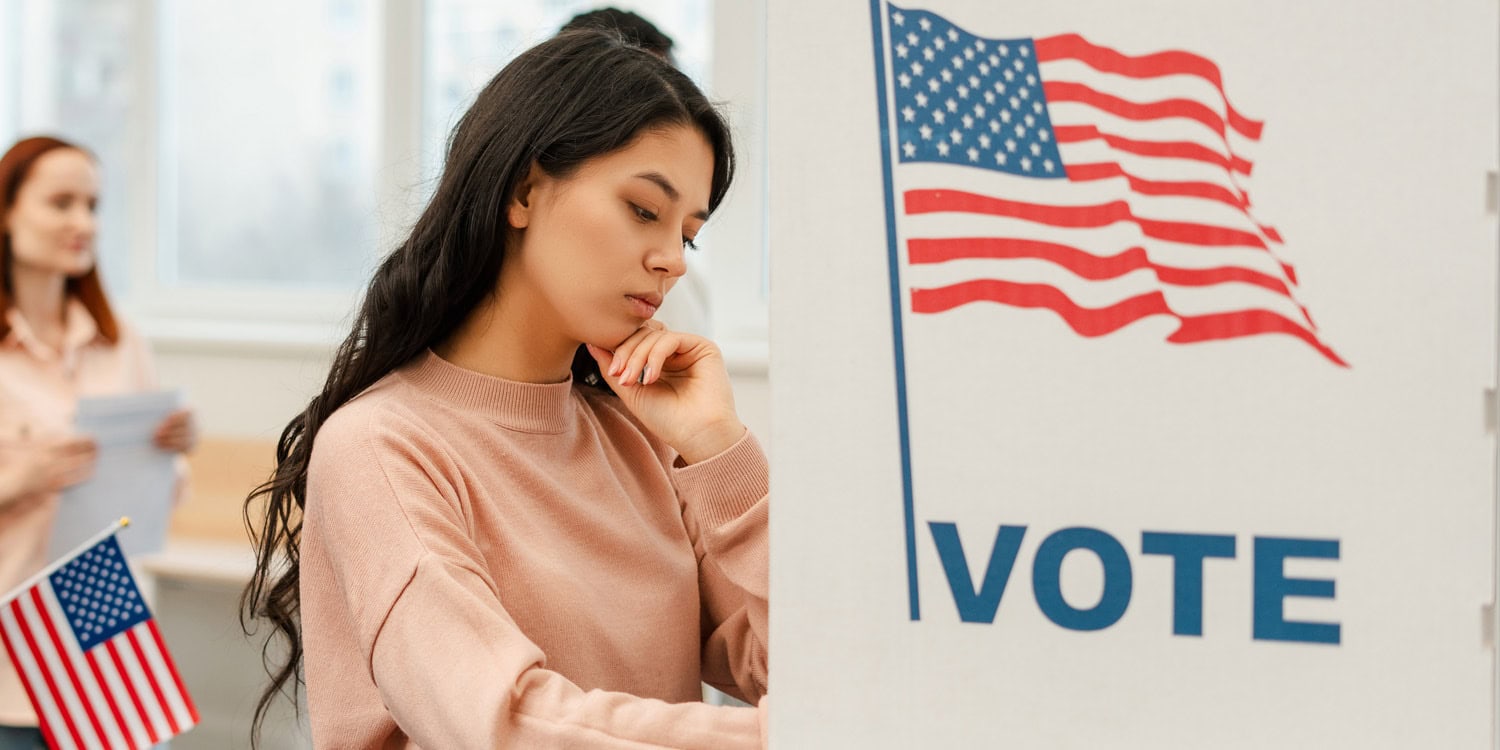A new study published in the Journal of Marriage and Family has shed light on a persistent trend in American politics: unmarried voters are more inclined to support Democratic presidential candidates compared to their married counterparts. Researchers found that this difference in voting preferences is largely explained by the distinct racial and religious make-ups of these two groups. Specifically, the higher proportion of Black voters among unmarried individuals, and the lower levels of religious observance in this group compared to married voters, significantly contribute to this political divide.
Political analysts have long observed various divisions within the American electorate, such as differences based on gender, race, and location. However, the influence of marital status on political preference has received less attention in recent years. While studies in the 1980s and 1990s noted that unmarried individuals leaned more towards Democratic presidential candidates, the new research aimed to provide an updated analysis using data from more recent elections, spanning from 1984 to 2020.
The researchers sought to confirm whether this marital divide in voting remained relevant in contemporary American politics and, more importantly, to understand the underlying reasons for its existence and any changes over time.
“Researchers in the 1980s noticed that married Americans were voting more Republican than their unmarried counterparts. In the years that followed, however, this political cleavage went unstudied. The gap between married and unmarried voters has now become an enduring feature of American politics, and the gap between married and never-married voters has grown substantially,” said study author Karyn Vilbig, a PhD candidate at New York University.
To investigate this, the researchers utilized data from the General Social Survey, a nationally representative survey conducted in the United States. This survey collects information from a diverse sample of English- and Spanish-speaking households across the country. For this study, the team analyzed data from surveys conducted between 1985 and 2022, focusing on responses related to presidential elections from 1984 to 2020.
The sample included individuals who reported voting in the most recent presidential election prior to their survey participation. This focus on voters allowed the researchers to examine actual vote choices. They categorized voters into three marital status groups: married, never-married, and divorced. To understand the factors contributing to the marital voting gap, they considered several characteristics known to influence voting behavior. These included race (categorized as non-Hispanic White, non-Hispanic Black, Hispanic, and other), religious service attendance (ranging from never to several times a week), gender, region of residence (Northeast, Midwest, South, and West), age, education level (from no diploma to advanced degree), labor force participation (employed, retired, or other), parental status (parent or not), and household income adjusted for household size.
The study’s findings confirmed that a marital divide in presidential voting has been a consistent feature of American politics for decades. In every presidential election from 1984 to 2020, married voters were less likely to vote for the Democratic candidate compared to both never-married and divorced voters. Notably, the gap in Democratic voting between never-married and married individuals has significantly widened since the 1980s. In 1984, the gap was only about 4 percentage points, but by 2020, it had widened to nearly 20 percentage points.
The researchers discovered that racial composition was the most significant factor explaining the marital voting gap. Unmarried voters were found to be disproportionately composed of Black individuals, a group that overwhelmingly favors Democratic candidates. In contrast, married voters were more likely to be White, a group that leans less consistently Democratic. Importantly, the study showed that differences in racial make-up accounted for a substantial portion of the voting gap between both never-married and married voters, and divorced and married voters.
Further analysis revealed that among Black voters, there was virtually no difference in Democratic voting based on marital status. This suggests that race is a more powerful predictor of vote choice for Black Americans than marital status. Among non-Black voters, the study found that married people were more likely to attend church regularly compared with unmarried people. Because research has shown that people who attend church more often are more likely to vote for Republican candidates, this difference in religious behavior helped to explain part of the gap in voting patterns.
Another notable finding was that the growing difference between married and never-married voters is partly related to changes in racial composition over the past several decades. The percentage of married voters who are White dropped modestly from 88 percent to 78 percent between 1984 and 2020. However, among never-married voters, the decline was much sharper—from 85 percent down to 60 percent.
At the same time, the share of Black and Hispanic voters, who are more likely to vote Democratic, increased much more among never-married voters than among married voters. These shifts in the makeup of the electorate help to explain why the gap in voting Democratic between married and never-married voters has grown significantly over this period.
“Systematic differences in who enters into and remains married help to explain part of this gap,” Vilbig told PsyPost. “First, unmarried voters are disproportionately Black, and Black voters overwhelmingly support Democrats. Among non-Black voters, differences in religiosity contribute to marital gaps because less religious voters are more likely to be unmarried and to vote Democratic. The gap between married and never-married voters has increased so much since the 1980s in part because never-married voters became more diverse (with a smaller percent White) at a faster rate than married voters.”
To explore other potential explanations, the researchers also considered income alongside race and religiosity. But compared to the substantial influence of race and religiosity, income played a relatively minor role in explaining why married and unmarried individuals vote differently.
“When we saw the voting gap between married and unmarried voters, we suspected that part of it may come from differences in their household incomes,” Vilbig noted. “On average, married households have higher incomes than their unmarried counterparts (often because they have two incomes). We thought that the higher household incomes of married voters might lead them to prefer Republican policies (like lower taxes) while the lower household incomes of unmarried voters might make them prefer Democratic policies (like a stronger social safety net). We find no support for this hypothesis.”
The researchers acknowledged that their study has some limitations. While they identified race and religiosity as key factors, a portion of the marital voting gap remains unexplained by the characteristics they examined. They suggested that unmeasured factors, such as differences in attitudes and values, could also play a role.
“Attitudes about topics like gender and family stand out as strong candidates for explaining the remaining gaps because these attitudes are likely predictive of both marital status and vote choice,” Vilbig said. “The data we used in this study did not allow us to explore such possibilities.”
The study, “Unmarried Americans vote more Democratic than their married counterparts: The role of race and religiosity in the marital gap,” was authored by Karyn Vilbig, Paula England, and Michael Hout.




